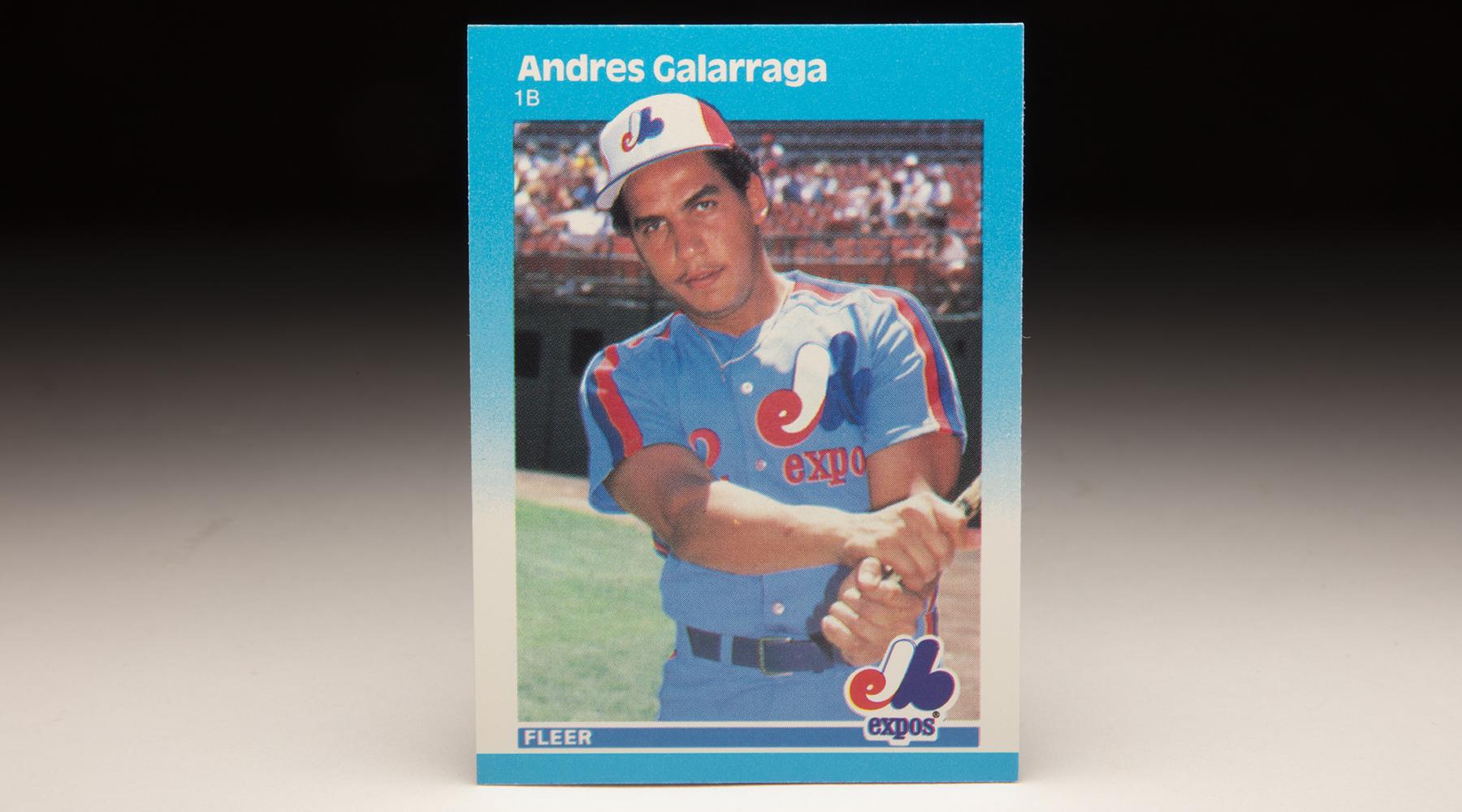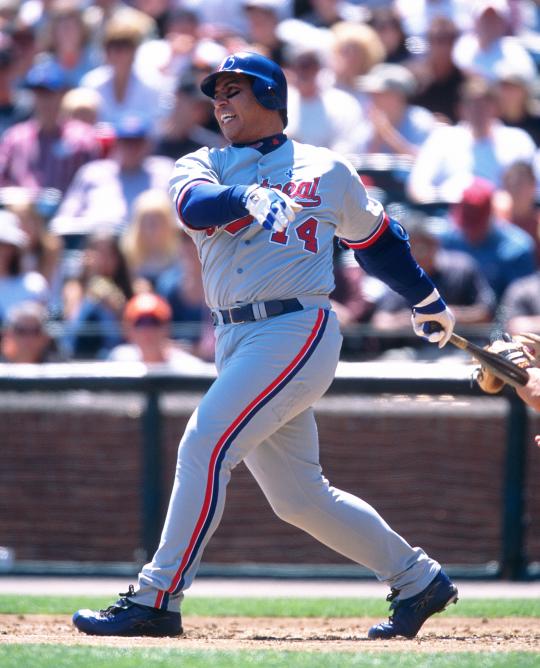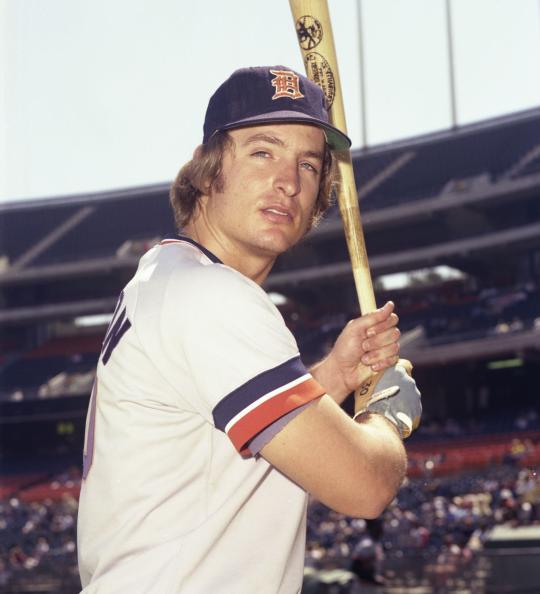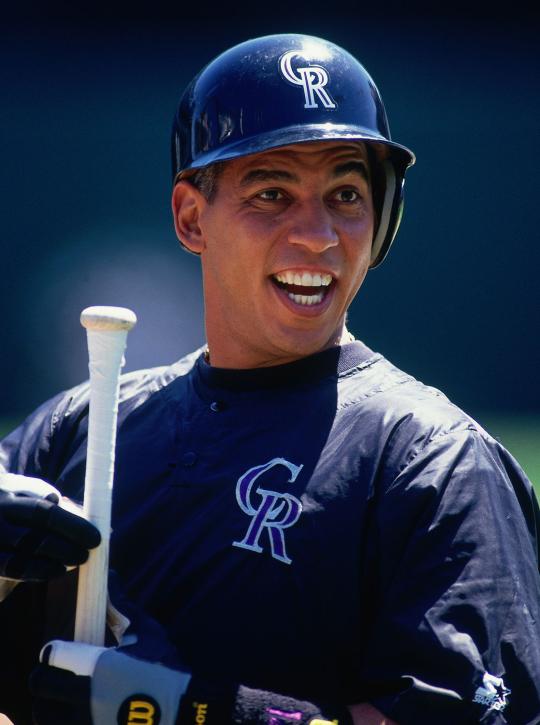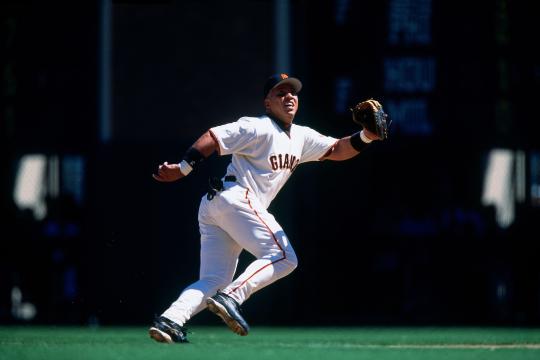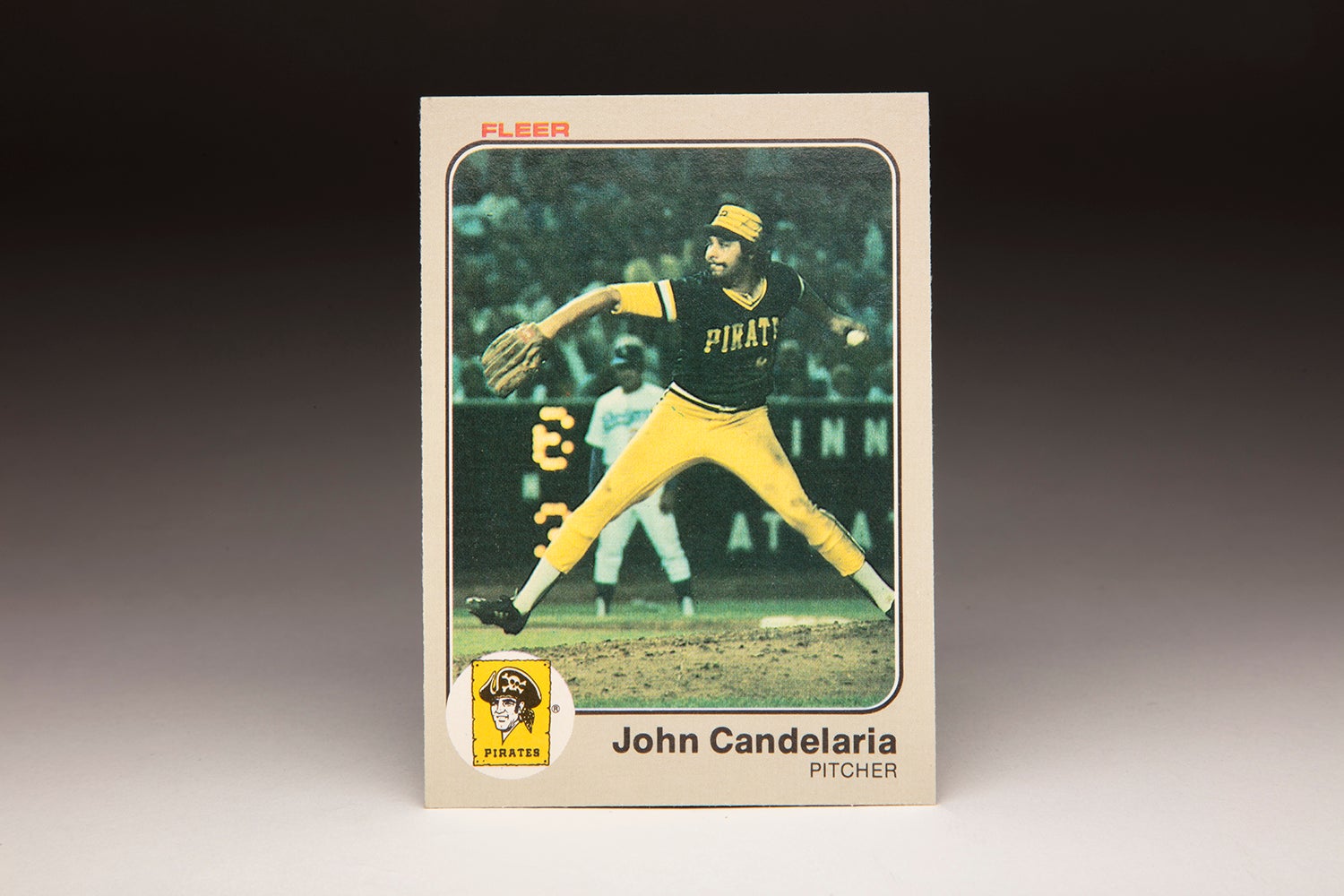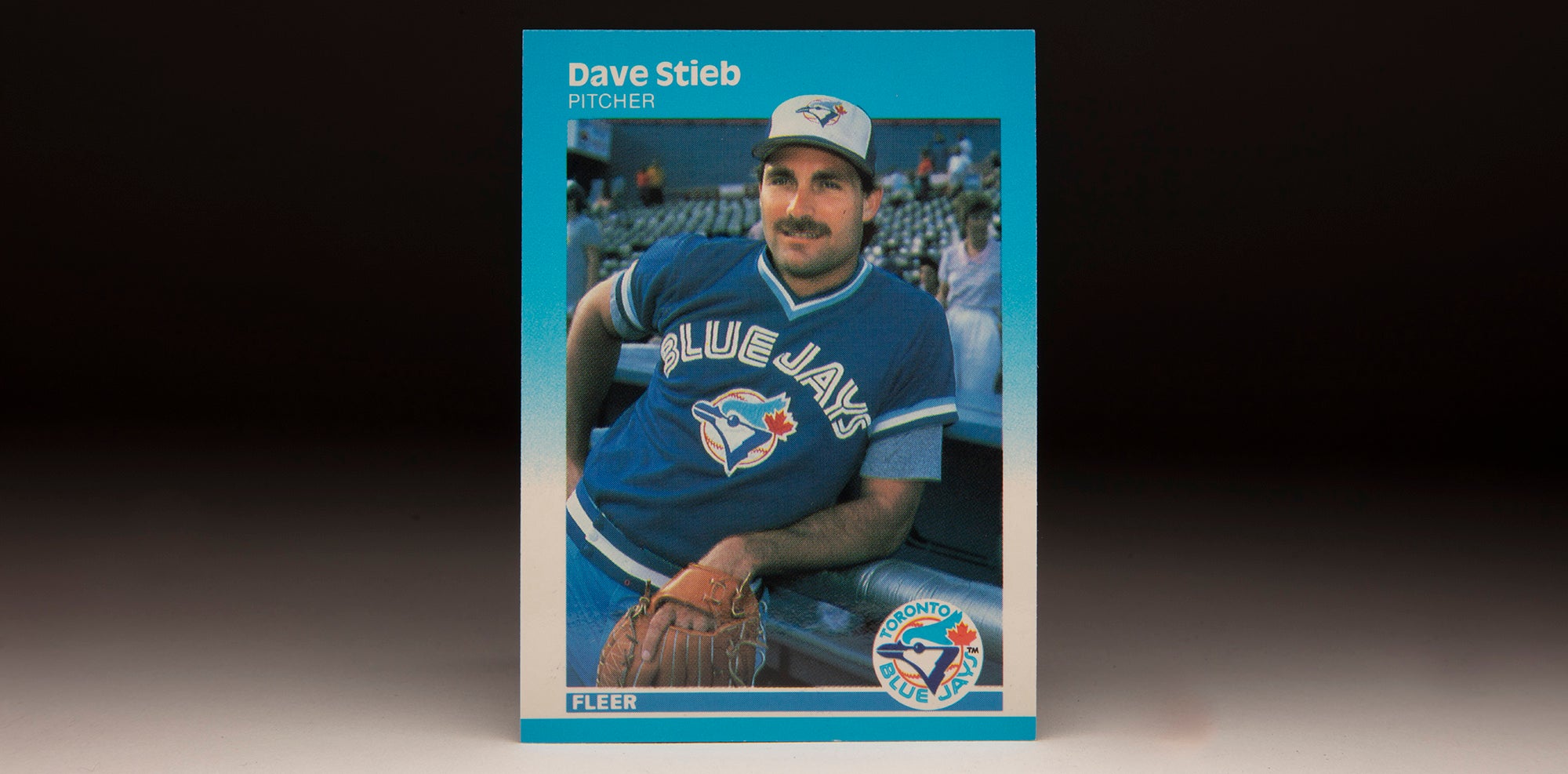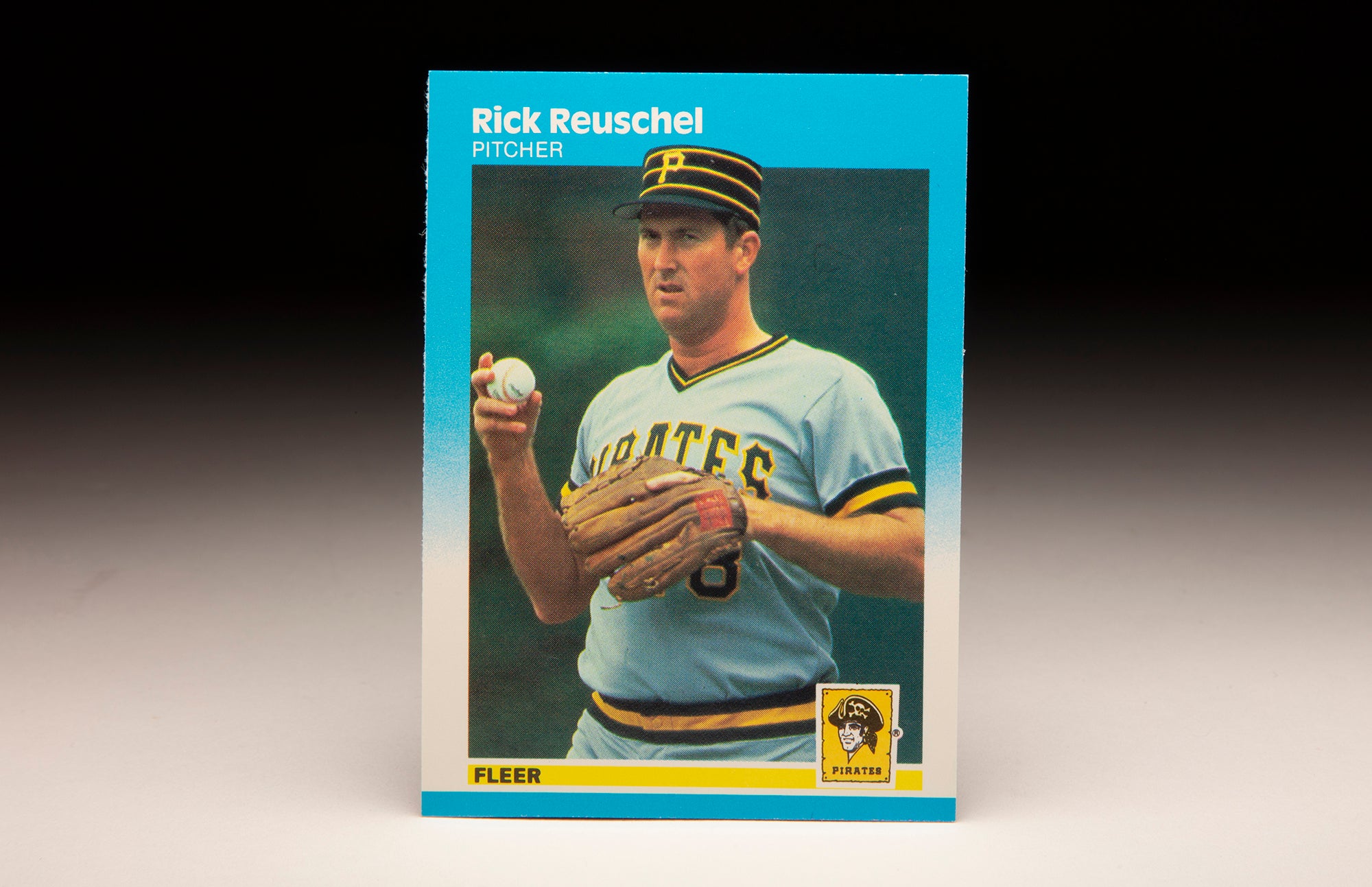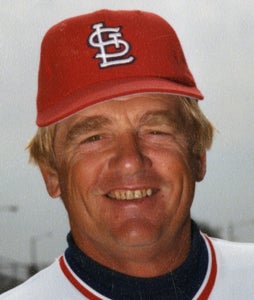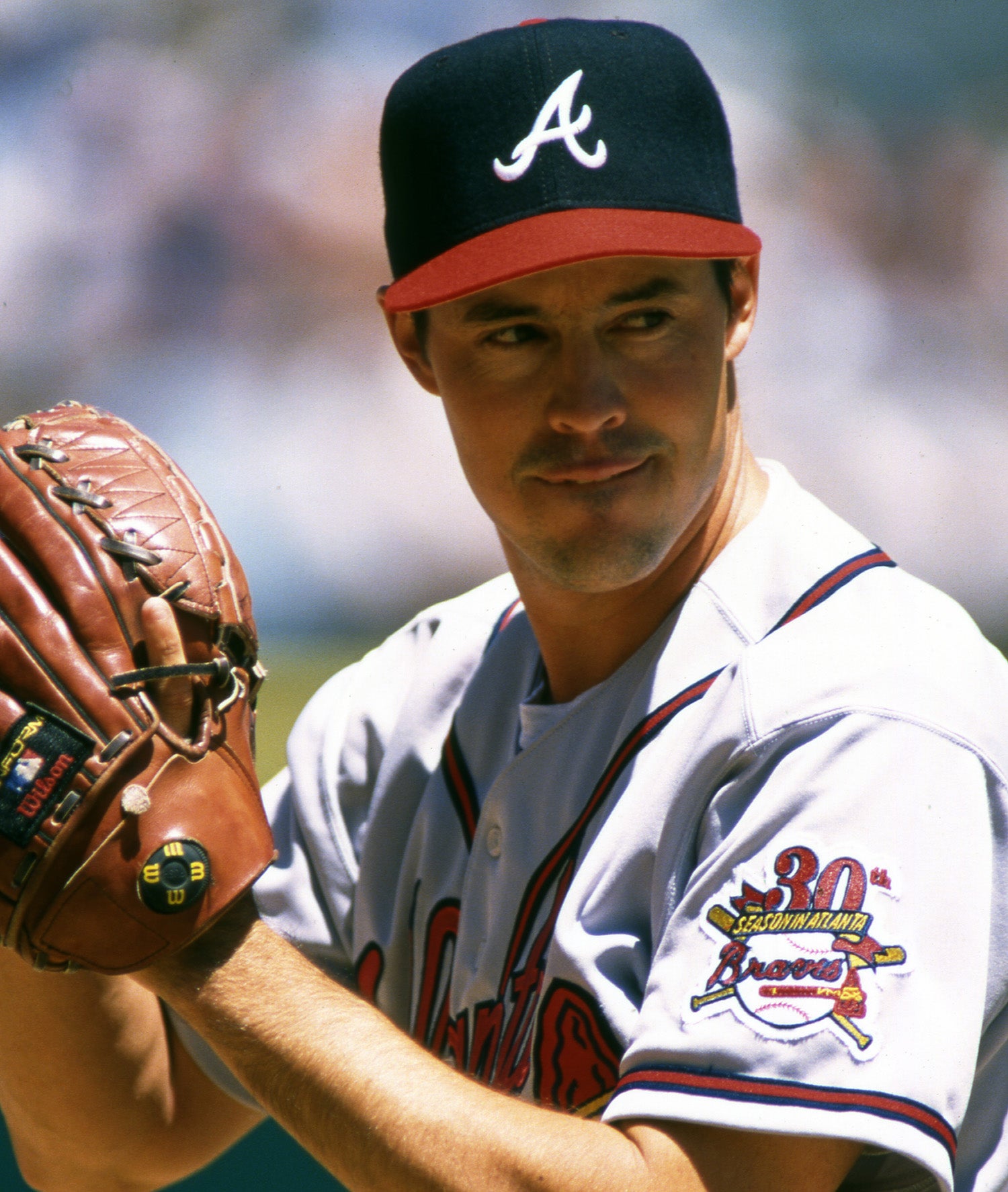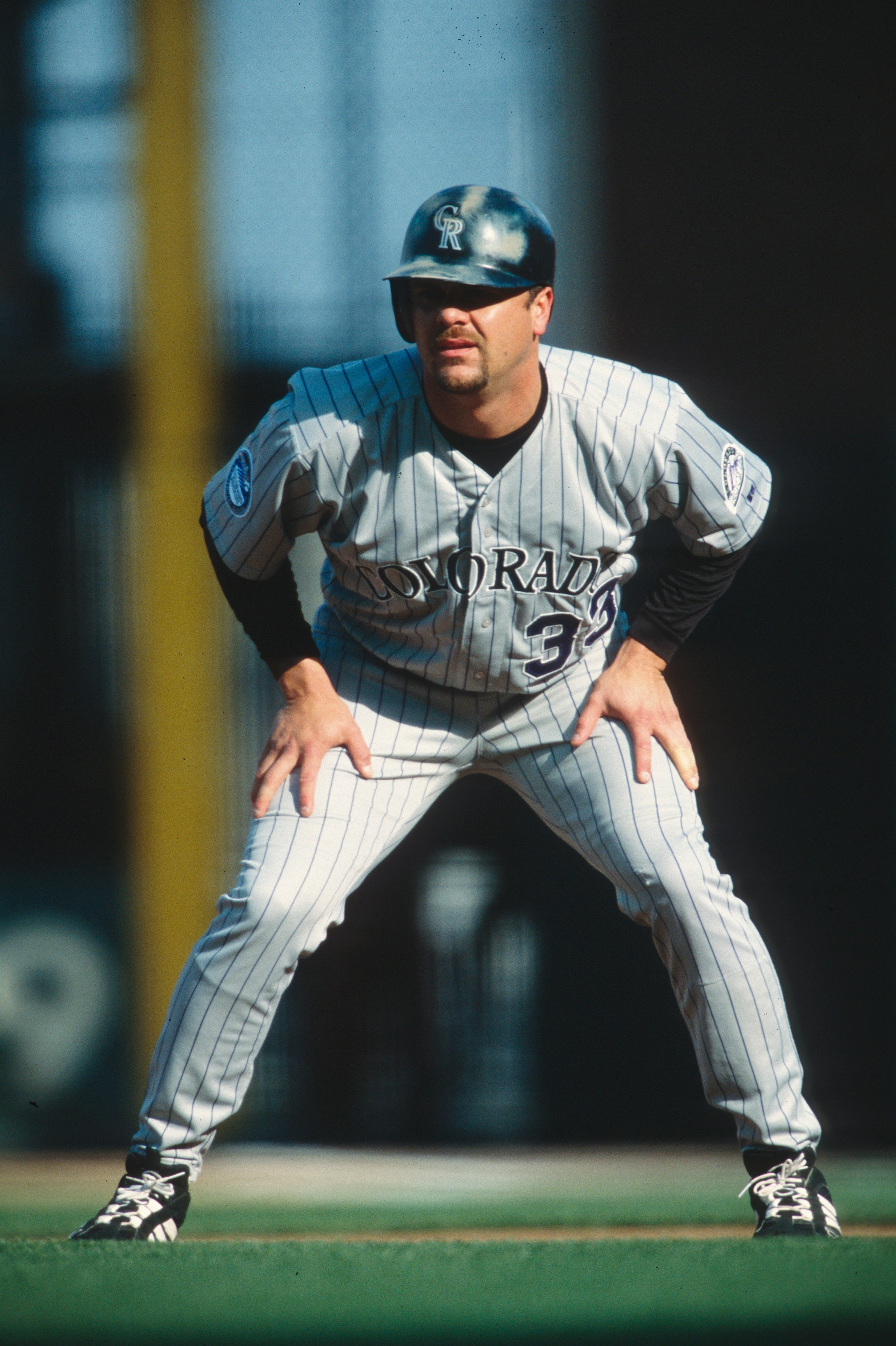- Home
- Our Stories
- #CardCorner: 1987 Fleer Andrés Galarraga
#CardCorner: 1987 Fleer Andrés Galarraga
A total of five MLB players have posted two straight seasons with at least a .300 batting average, 190 hits, 40 home runs and 140 RBI.
Three of them did it before World War II: Jimmie Foxx, Lou Gehrig and Chuck Klein. Each a plaque in Cooperstown.
The final two players on that list both played for the Colorado Rockies: Andrés Galarraga and Todd Helton. It is Galarraga, however, who – thanks to an unconventional career path and at late-career boost in the Rocky Mountains – remains one of the most underappreciated sluggers in history.
Hall of Fame Membership
There is no simpler, and more essential, way to demonstrate your support than to sign on as a Museum Member.
Be A Part of Something Greater
There are a few ways our supporters stay involved, from membership and mission support to golf and donor experiences. The greatest moments in baseball history can’t be preserved without your help. Join us today.
Born June 18, 1961, in Caracas, Venezuela, Galarraga was a first-generation Venezuelan whose father emigrated from Italy. He learned the game on the sandlots of the nearby town of Chapellin and was playing in the Venezuelan Winter League by his late teens.
Francisco Rivero, a legendary local scout who had identified top talent like Tony Armas, Bo Díaz and Manny Trillo, alerted Felipe Alou – then an Expos scout and later Galarraga’s manager with the Giants – to Galarraga’s talent.
“I didn’t think he had a chance,” Alou told the Washington Post. “I thought he’d have trouble walking, never mind playing. He was incredibly fat.”
But Alou also noticed Galarraga’s quick feet and powerful swing, gave him a bonus of $1,000 and signed him on Jan. 19, 1979. Knowing very little English, Galarraga came to the United States and was assigned to Class A West Palm Beach to start the season. But after struggling at that level, he was sent to Calgary of the Pioneer League when the rookie league season opened in June.
After hitting .214 in 42 games with Calgary, he was sent back there in 1980 and hit .263 in 59 games. Galarraga again played short-season ball in 1981, hitting .260 in 47 games for Jamestown of the New York-Penn League.
In 1982, the Expos sent Galarraga back to West Palm Beach where he hit .281 and showed power for the first time, collecting 14 homers and 51 RBI. He returned to the Florida State League in 1983 and hit .289 with 10 homers and 66 RBI.
Then in 1984, Galarraga became a top prospect – winning the Southern League Most Valuable Player Award for the Double-A Jacksonville Suns after hitting .269 with 25 homers and 87 RBI. But following the season, Galarraga’s mentor Gonzalo Márquez – a fellow Venezuelan who played three MLB seasons with the Athletics and Cubs in the 1970s – died in an automobile accident following a Venezuelan Winter League game.
Galarraga, playing on the same team, was riding in the team bus following Marquez’s car and helped extricate Marquez’s body from the vehicle.
“He was my best friend,” Galarraga said. “He helped me more than anyone, and when he died I was left alone.”
But the lessons Márquez provided had taken root. In 1985, Galarraga was named the American Association’s Rookie of the Year after hitting .269 with 25 homers and 87 RBI for Triple-A Indianapolis, which was managed by Felipe Alou.
On Aug. 23, 1985, Galarraga made his big league debut for the Expos.
“When he hits a ball good, it doesn’t matter what park he is in or which direction the wind is blowing,” Expos farm director Bob Gebhard told the Indianapolis News prior to Galarraga’s promotion. “And he has a chance to become a quality major league power hitter.”
Galarraga had already acquired his nickname, The Big Cat, for his quickness around first base. He was given every chance to win the Expos starting first baseman’s job in Spring Training of 1986, but struggled – getting one hit in his first 31 spring at-bats and before being sent for an eye exam – leading the Expos to send two minor leaguers to the Pirates in exchange for veteran first baseman Jason Thompson on April 4.
The plan was to platoon the lefty-swinging Thompson with Galarraga while the prized prospect got his feet under him. But Thompson showed virtually no power while Galarraga got off to a blistering start, hitting .397 as late as May 8.
Thompson was released on June 30.
Galarraga cooled off but was hitting .250 with eight homers and 26 RBI in mid-July when he injured a knee sliding into second base. He underwent surgery and did not return to full strength until September – he suffered a rib cage injury in August – when he closed the season by hitting .327 with 32 hits in his final 28 games.
He finished the season with a .271 batting average, 10 homers and 42 RBI in 105 games.
“It was mental…100 percent mental,” Expos manager Buck Rodgers told the Palm Beach Post of Galarraga’s struggles in Spring Training of 1986. “The final six weeks or so, he hit the cover off the ball. I knew he was capable of that.”
The Montreal Expos brought in Jason Thompson, who had debuted in the big leagues with the Tigers in 1976, as a potential platoon partner with Andrés Galarraga for the 1986 season. But Galarraga quickly earned all the playing time at first base. (Doug McWilliams/National Baseball Hall of Fame and Museum)
Galarraga remained hot in Venezuelan Winter League play after the season, then continued his success into 1987 – finishing the year with a .305 batting average, 40 doubles, 13 homers and 90 RBI.
A thumb injury in 1987 limited Galarraga’s power at the plate, but the setback may have helped him in the long run.
“I couldn’t pull the ball,” Galarraga told the Washington Post, “but it taught me to hit the ball to right-center, or wherever it was pitched. Now that my thumb is better, I can hit it out to any part of the field.”
In 1988, Galarraga became a household name across the game when he led the NL with 182 hits, 42 doubles and 329 total bases while hitting .302 with 29 homers, 99 runs scored and 92 RBI. He was named to his first All-Star Game, won the Silver Slugger Award at first base and finished seventh in the NL Most Valuable Player voting.
“I said last year that he was the best first baseman in the National League,” Tim Raines told the Washington Post in 1988. “That’s a high compliment because Will Clark and Keith Hernandez aren’t bad.”
“He’s the best first baseman playing the game today,” said Cardinals manager Whitey Herzog, who said Galarraga ranked with Gil Hodges as one of the best right-handed throwing first basemen he had ever seen. “If he doesn’t get hurt, he’s a Hall of Famer for certain.”
Galarraga signed a one-year contract worth $865,000 following the 1988 campaign but was unable to repeat his numbers – except in strikeouts – in 1989, hitting .257 with 23 homers and 85 RBI while leading the NL in Ks for the second straight year with 158.
Expos management, however, chalked it up to an aberration and signed Galarraga to a three-year deal worth $6.85 million that included a team option for the 1993 campaign.
But Galarraga struggled again in 1990, hitting .256 with 20 homers and 87 RBI and again leading the league in strikeouts – though he did win his second straight Gold Glove Award at first base. Then in 1991, Galarraga injured a knee while chasing a foul ball, underwent surgery and missed all of June, appearing in just 107 games while hitting .219 with nine homers and 33 RBI while becoming a target of the Montreal boo birds.
On Nov. 25, 1991, the Expos traded Galarraga to the Cardinals for pitcher Ken Hill.
“There’s no way this will happen again,” Galarraga told the St. Louis Post-Dispatch following the trade. “I’m only 30 years old. I know I can play.”
But things got even worse in 1992. In 95 games, Galarraga hit .243 with 10 homers and 39 RBI – missing almost two months with a broken wrist after being hit by a pitch in the second game of the season. When his contract expired following the season, the Cardinals allowed him to become a free agent.
The future, however, was beckoning. The Colorado Rockies were set to begin play as an expansion team in 1993, and new manager Don Baylor had been the Cardinals hitting coach in 1992. The Rockies general manager was Bob Gebhard, who was the Expos’ farm director when Galarraga blossomed in the minors.
“When I saw Andrés Galarraga’s name on the free agent list,” Gebhard told the Associated Press after signing Galarraga to a one-year incentive-laden deal on Nov. 16, “it set off a red flag.”
Galarraga did not disappoint. In 120 games, he hit an NL-leading .370 with 35 doubles, 22 homers and 98 RBI – earning his second All-Star Game selection and finishing 10th in the NL MVP voting. It was the first time in history that a player from Venezuela had won a batting title.
Following the season, Galarraga quickly re-signed with the Rockies for a reported $12 million over four years.
“In St. Louis, Don Baylor told me to open my left foot so I could see the ball with both eyes,” Galarraga told the Baltimore Sun in 1994. “He also told me to go the opposite way more. Things came together right away.”
The hits kept coming in 1994 as Galarraga hit .319 with 31 homers and 85 RBI in 103 games of the strike-shortened season, again good for a 10th-place finish in the NL MVP voting. The in 1995, former Expos teammate Larry Walker joined Galarraga in Colorado – giving the Rockies an incredibly potent lineup that also featured Dante Bichette, Ellis Burks and Vinny Castilla.
Hitting out of the fourth or fifth hole most of the time, Galarraga batted .280 with 31 homers and 106 RBI as the Rockies advanced to the postseason as the NL Wild Card team. In his first postseason action, he hit .278 with two RBI in the Rockies’ four-game loss to the Braves in the NLDS.
The Rockies did not return to the postseason in 1996 or 1997, but Galarraga posted the best two seasons of his career at the plate. He batted .304 with 190 hits and 119 runs scored to go with league leading totals in home runs (47) and RBI (150) in 1996, then followed that in 1997 – his age-36 season – with a .318 batting average, 191 hits, 41 home runs and an NL-best 140 RBI.
On May 31, 1997, Galarraga hit a grand slam home run off the Marlins’ Kevin Brown that was measured at 529 feet – landing in the upper deck, tarpaulin-covered section of Pro Player Stadium. Debate has continued for years about the actual length of the blast – immediately after the homer it was announced the ball traveled 573 feet – but it was without a doubt one of the longest home runs of the decade.
“I knew I crushed that ball as soon as I hit it,” Galarraga told the South Florida Sun Sentinel. “But I never thought it would go that far.”
But with Galarraga’s contract expiring after the 1997 season – and Helton in the organizational pipeline after having debuted in the big leagues that year – the Rockies allowed Galarraga to depart as a free agent.
On Nov. 20, 1997, Galarraga signed a three-year deal with the Braves worth a reported $24.75 million. Speculation immediately ensued as to how much the thin air in Denver had benefitted Galarraga, who batted .350 with 100 homers and 355 RBI in Denver over five seasons but hit just .281 with 72 homers and 224 RBI on the road.
But the change of scenery did not change Galarraga’s production: He hit .305 with 44 homers and 121 RBI in 1998, earning his fourth All-Star Game selection, becoming the first player in history to hit 40 home runs in consecutive seasons for two different teams and helping the Braves win 106 games and the NL East title. Galarraga hit .250 in the Braves’ NLDS sweep of the Cubs and hit a grand slam in Game 4 of the NLCS vs. the Padres, but the Braves lost to San Diego in six games.
In November, Galarraga reported pain in his back. After searching for weeks for the cause, doctors told Galarraga on Feb. 18, 1999, that he had non-Hodgkin’s lymphoma that was attached to his third lumbar vertebra. He immediately began chemotherapy treatments.
“This is obviously a horrible blow personally and a blow to the team,” Braves president Stan Kasten told the Atlanta Journal Constitution. “But we’re comforted by today’s results, which suggest he’s going to be fine.”
After sitting out the 1999 season – one where they Braves won the National League pennant with Ryan Klesko seeing most of the time at first base – Galarraga returned in Spring Training of 2000, determined to regain his previous form.
“Same ol’ Cat,” teammate Greg Maddux told the Associated Press after throwing batting practice to Galarraga. “You leave a pitch up and he hits it out.”
Galarraga turned 39 during the 2000 campaign but was still potent at the plate, hitting .302 with 28 home runs and 100 RBI in 141 games while earning his fifth All-Star Game selection. But when his contract expired at the end of the season, the Braves allowed him to test the free agent market.
The Rangers quickly agreed to terms with Galarraga on a one-year, $6.25 million deal with the idea that he would be their designated hitter. But even with newly acquired Álex Rodríguez in the lineup, the Rangers struggled in 2001 and traded Galarraga to the Giants on July 24 in exchange for three prospects.
Galarraga finished the season with a .256 batting average, 17 home runs and 69 RBI in 121 games with the Rangers and Giants, then returned to Montreal on a minor league deal for the 2002 season. He hit .260 with nine homers and 40 RBI off the bench before returning to the Giants for the 2003 season – where he reunited with Felipe Alou.
“He brought me to professional baseball and also to the big leagues,” Galarraga told the San Francisco Examiner about Alou. “He helped me to be a better professional.”
In a reserve role, Galarraga hit .301 with 12 homers and 42 RBI in 110 games to help the Giants win the NL West before falling to the Marlins in the NLDS.
Following the season, Galarraga’s cancer returned – and once again he and his doctors were able to achieve remission via chemotherapy and a stem cell transplant.
On Aug. 6, 2004, he signed with the Angels.
“I will play for anyone to get the home runs I need to reach 400,” said Galarraga, who stood at 398 homers following the 2003 season.
After hitting .304 in 25 games with Triple-A Salt Lake City, Galarraga was called up to the Angels in September. He appeared in 11 games – mostly as a pinch hitter – hitting one home run.
Then after failing to make the Mets’ Opening Day roster in 2005, Galarraga retired.
“This is a sad day for me, but I honestly felt it was the right time to step away,” Galarraga told the Associated Press on March 29, 2005. “I just wasn’t playing up to the expectations that I have set for myself throughout my entire career, and I wanted to walk away on my own terms.”
Galarraga finished his 19-year career with 399 home runs, 444 doubles, 128 stolen bases, 1,425 RBI, a .288 batting average and a .499 slugging percentage.
In 2010, Galarraga was inducted into the Venezuelan Sports Hall of Fame.
“Great, great career,” Mets manager Willie Randolph told the Associated Press upon Galarraga’s retirement. “Great man. Great person.”
Craig Muder is the director of communications for the National Baseball Hall of Fame and Museum

